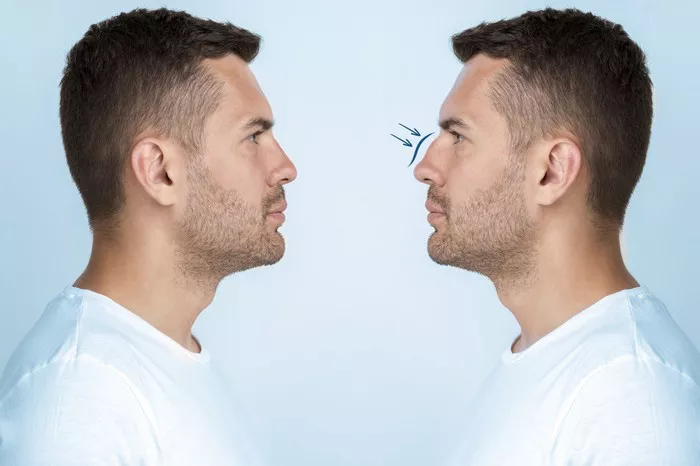Rhinoplasty, commonly known as nose reshaping or a “nose job,” is a surgical procedure that aims to alter the shape, size, or proportions of the nose. Many individuals considering rhinoplasty wonder whether the results are permanent or if additional procedures will be necessary in the future. In this article, we will explore the long-term effects of rhinoplasty and provide insights into the permanence of this cosmetic procedure.
Understanding the Purpose of Rhinoplasty
Rhinoplasty can be performed for both cosmetic and functional reasons. Cosmetic rhinoplasty focuses on improving the aesthetic appearance of the nose, addressing concerns such as a prominent bump on the bridge, a drooping tip, wide nostrils, or an asymmetrical shape. Functional rhinoplasty, on the other hand, aims to correct structural issues that may impede proper breathing or cause other nasal-related functional problems.
Immediate Results vs. Long-Term Results
Following rhinoplasty surgery, patients will notice immediate changes in the appearance of their nose. However, it is important to recognize that the final results of rhinoplasty may not be fully evident until the healing process is complete. Swelling and bruising are common after the procedure, and it may take several weeks or even months for these effects to fully subside.
During the healing process, the nasal tissues gradually settle and adjust, leading to further refinement of the nose’s appearance. It is crucial to follow the post-operative instructions provided by your surgeon to ensure proper healing and optimal results.
Permanence of Rhinoplasty Results
Rhinoplasty is considered a long-lasting procedure, and the results can indeed be permanent. The changes made to the nasal structure during surgery are intended to be enduring. However, it is important to note that the aging process and other factors can still affect the appearance of the nose over time.
The nose, like other facial features, continues to age naturally. The skin may lose elasticity, and the underlying structures may undergo changes. These factors can contribute to subtle changes in the appearance of the nose as the years go by. However, it is important to understand that the primary changes achieved through rhinoplasty should remain intact.
Factors Affecting Long-Term Results
Several factors can influence the long-term results of rhinoplasty:
1. Surgeon’s Skill and Experience
The skill and expertise of the surgeon performing the rhinoplasty are crucial factors in achieving satisfactory and long-lasting results. It is important to choose a board-certified plastic surgeon or an otolaryngologist with specialized training and experience in rhinoplasty.
2. Tissue Healing and Individual Factors
Each individual’s healing process is unique. Factors such as the quality of skin, tissue thickness, and overall health can impact the healing and final outcome of the surgery. Following post-operative instructions and maintaining a healthy lifestyle can contribute to successful healing and long-term results.
3. Aging Process
As mentioned earlier, the natural aging process can affect the appearance of the nose over time. Skin elasticity may decrease, and the nasal structures may undergo changes. While the primary changes achieved through rhinoplasty are intended to be permanent, it is important to have realistic expectations about the potential for subtle changes due to the aging process.
4. Trauma or Injury
Significant trauma or injury to the nose, such as a fracture, can impact the results of rhinoplasty. It is important to take precautions to protect the nose from injury following surgery and to seek medical attention promptly if any trauma occurs.
5. Secondary Procedures
In some cases, individuals may choose to undergo revision rhinoplasty or additional procedures to further refine or correct their nasal appearance. These secondary procedures are not necessarily a result of the primary rhinoplasty being unsuccessful but may reflect personal preferences or changes in aesthetic goals over time.
Consulting with a Qualified Surgeon
If you are considering rhinoplasty, it is crucial to consult with a qualified and experienced plastic surgeon or otolaryngologist. During the consultation, the surgeon will evaluate your nasal structure, discuss your goals and expectations, and provide an assessment of the potential outcomes and long-term results. They will also explain the specific techniques they plan to use and any limitations or risks associated with the procedure.
By choosing a skilled surgeon and following their guidance throughout the healing process, you can increase the likelihood of achieving long-lasting and satisfying results from your rhinoplasty surgery.
Conclusion
Rhinoplasty can provide significant improvements to the appearance and function of the nose. While the results of rhinoplasty are intended to be long-lasting, it is important to understand that the nose will continue to age naturally, and subtle changes may occur over time. By selecting a qualified surgeon, following post-operative instructions, and maintaining a healthy lifestyle, you can enhance the longevity of your rhinoplasty results. If you have any concerns or questions about the permanence of rhinoplasty, it is best to consult with a qualified professional who can provide personalized advice based on your unique circumstances.


